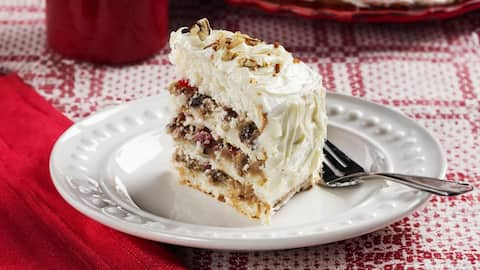Exploring the famous Lane cake of Alabama
What's the story
The Lane cake, a distinctive and renowned dessert, features three layers of white cake filled with custard and fruit, generously soaked in bourbon, and topped with a light, airy frosting. This delectable treat was crafted over a century ago by Emma Rylander Lane from Clayton, Alabama, USA and has since been reimagined by skilled bakers throughout the region, each adding their own flair to the classic recipe.
History
Origin of Lane Cake
Originally dubbed "prize cake," Lane submitted her masterpiece to a baking contest at the county fair in Columbus, Georgia. After securing the first place, she shared her recipe in a 1898 cookbook titled Some Good Things To Eat. Lane infused her cake with a blend of Southern charm and creativity, making it a centerpiece for celebrations. The cake's popularity skyrocketed when author Harper Lee referenced it in her 1960 novel To Kill A Mockingbird.
Cake
What is Lane cake?
The basic recipe for Lane cake is an adaptation of the traditional 1-2-3-4 cake, which uses four eggs, three cups of flour, two cups of sugar, and one cup of butter. The only difference is that eight egg whites are used in place of the four whole eggs to make the texture more pliable. Bourbon, vanilla, butter, sugar, egg yolks, and raisins are the usual ingredients of the signature filling. Coconut flakes and pecans are often added in modern variations.
Popularity
What made the cake so popular?
The Lane cake has captivated taste buds across the American South, even winning over former President Jimmy Carter. Its various adaptations have graced the cover of Southern Living multiple times, demonstrating its timeless appeal. With its rich heritage and scrumptious flavor, the Lane cake remains a cherished dessert throughout the region. Whether you are a fan of the classic recipe or enjoy a contemporary twist, there is no denying the enchantment and allure of this quintessential Southern delight.
Celebratory cake
Cake for celebrations
Lane cake is synonymous with celebrations in the South. From weddings and birthdays to holidays and family gatherings, this dessert holds a cherished place at the Southern table, symbolizing joy, togetherness, and the passing down of traditions through generations. While the traditional Lane cake remains a stalwart favorite, modern bakers have embraced variations, experimenting with different fillings, frostings, and even gluten-free adaptations. This adaptability ensures Lane cake's relevance in contemporary kitchens.
